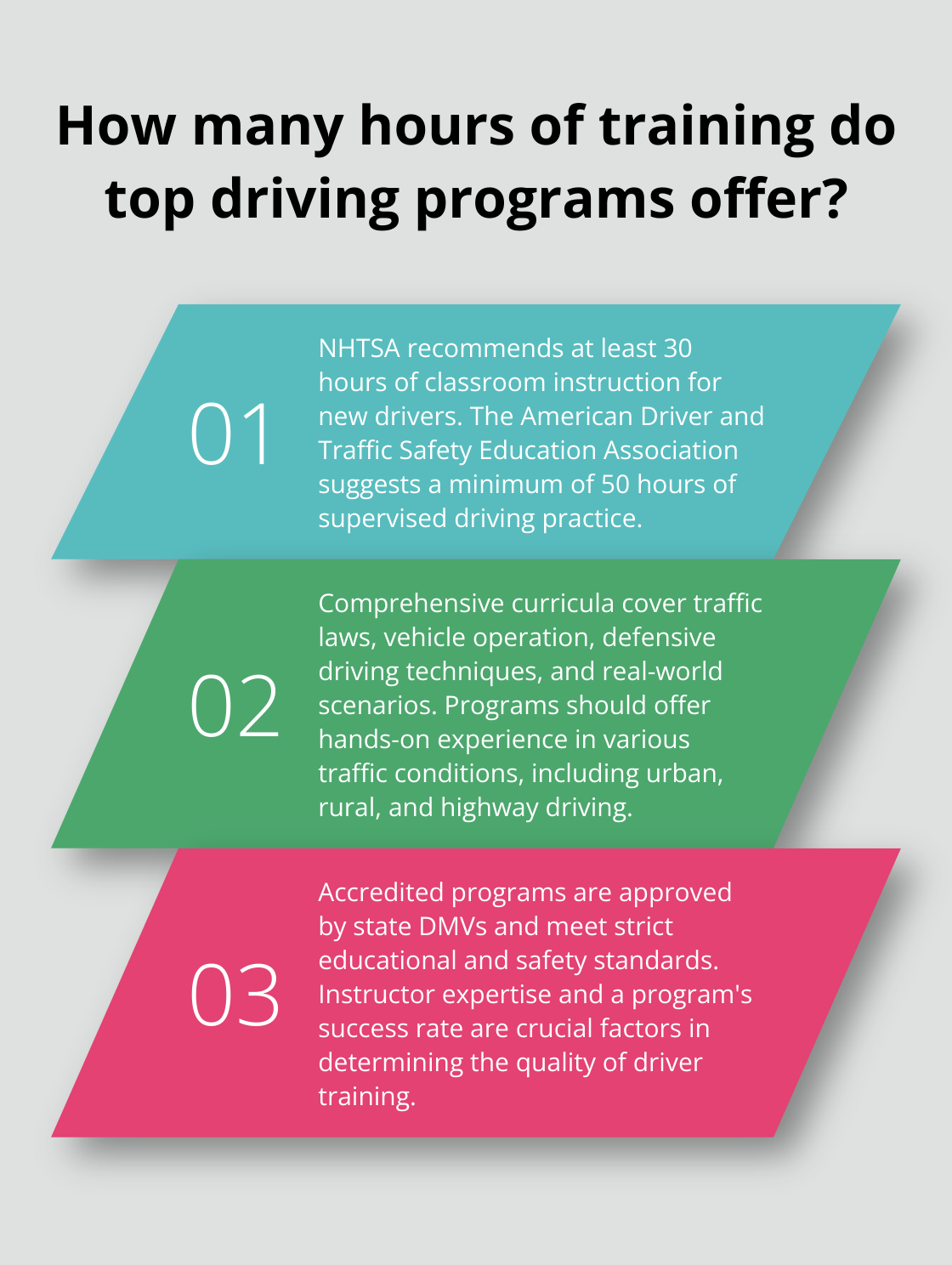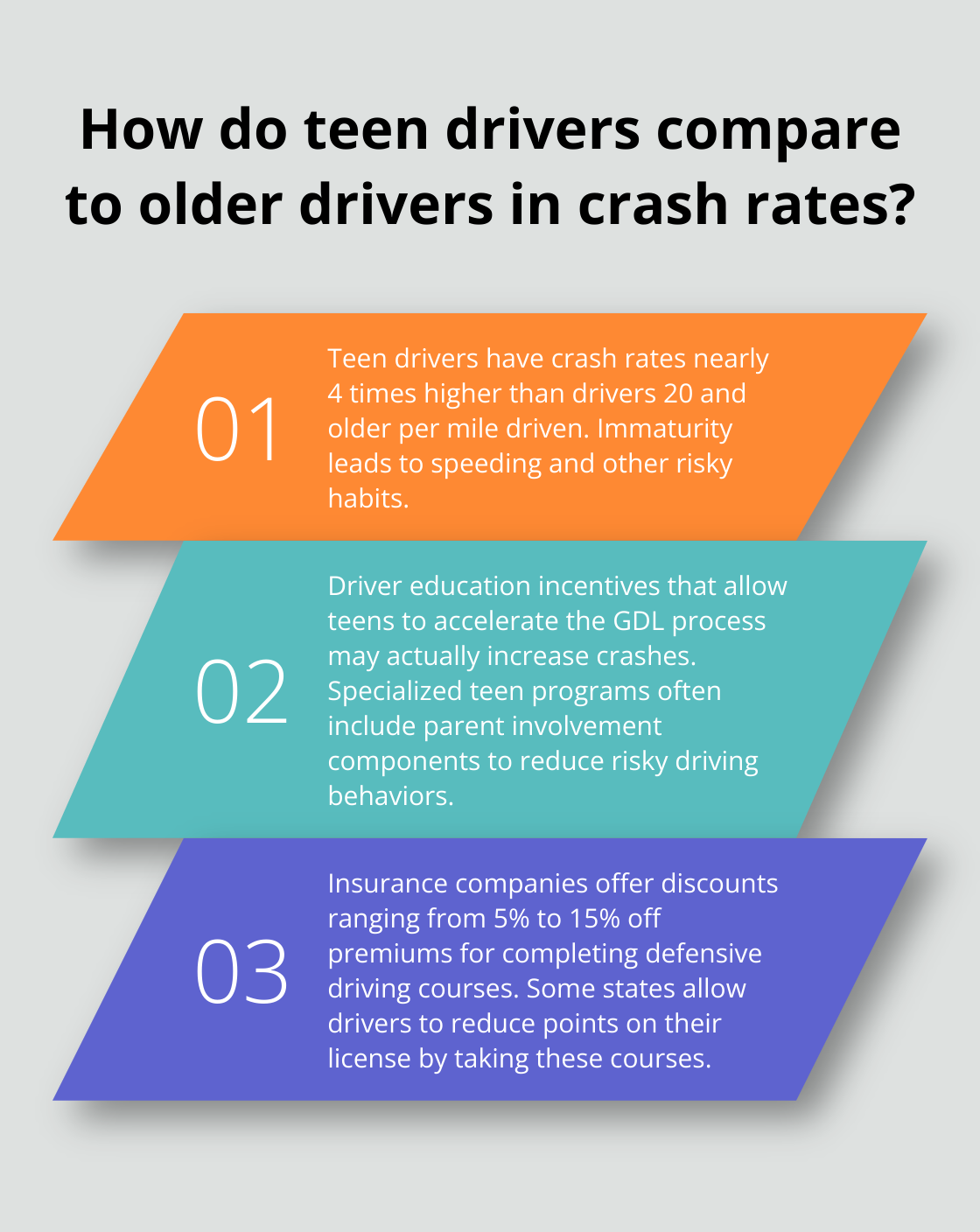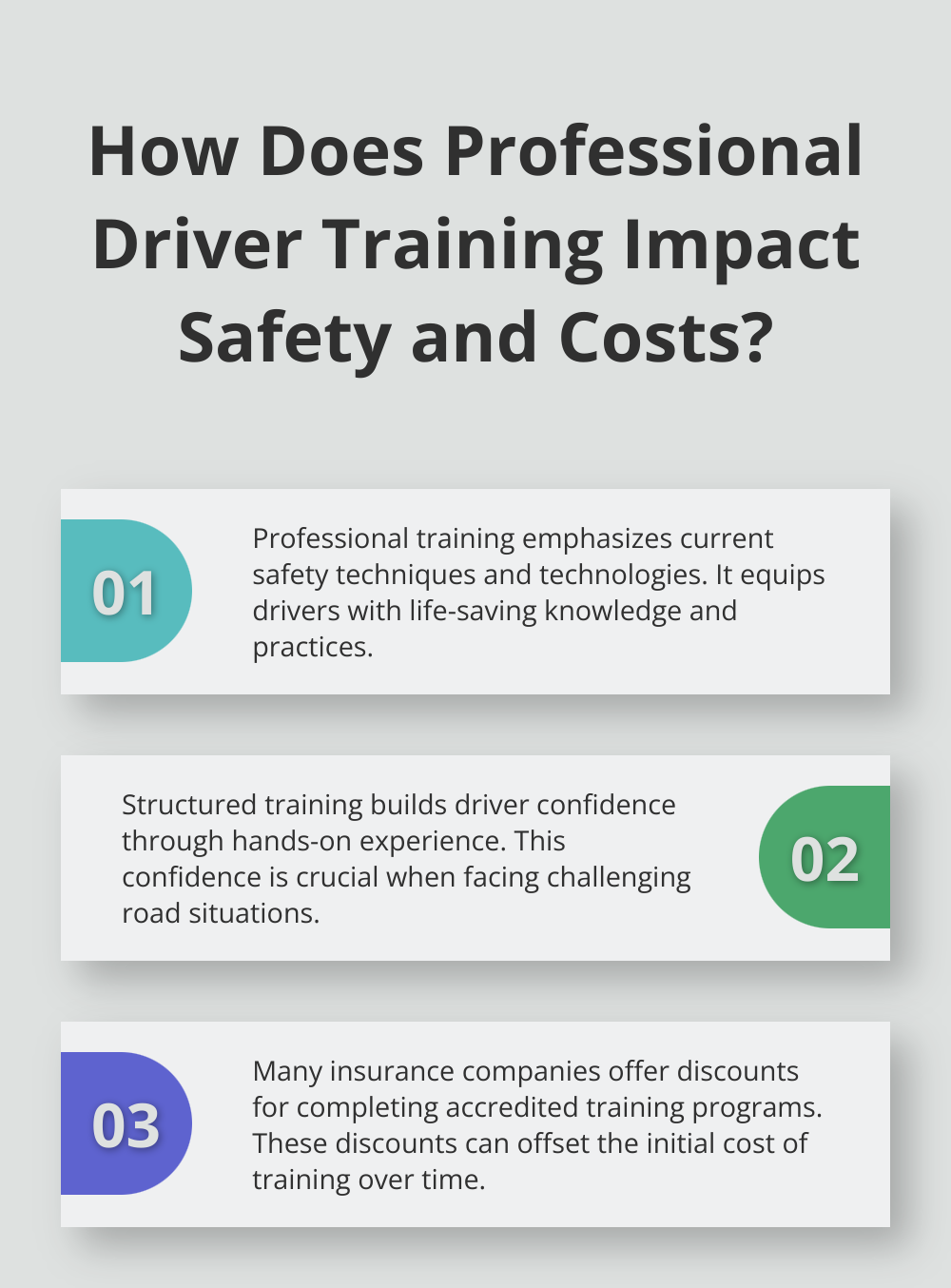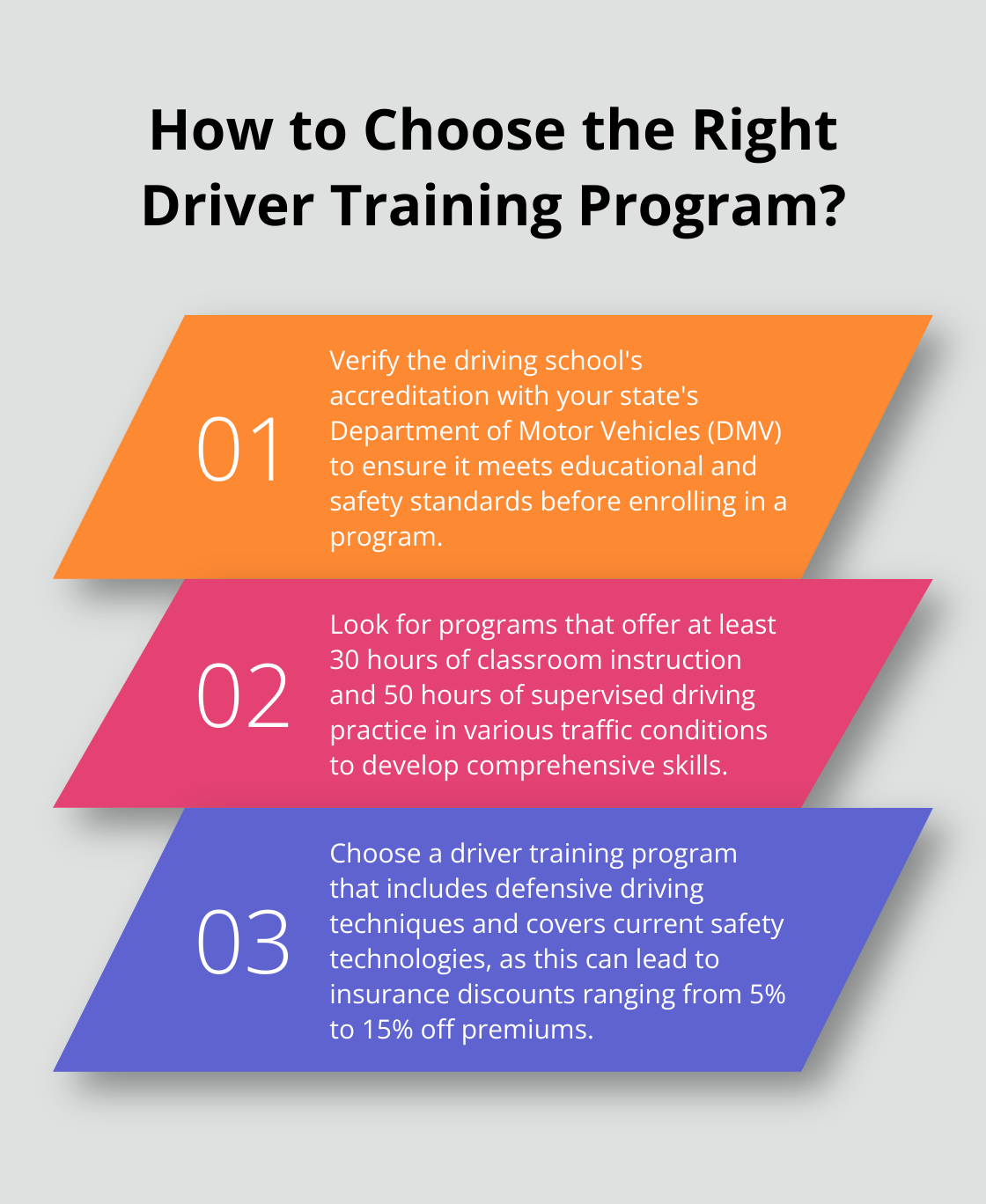How to Choose the Best Driver Training Program
Choosing the right driver training program is a critical step in becoming a safe and confident driver. At The Wiser Driver Driving School, we understand the importance of this decision.
With numerous options available, it’s essential to know what factors to consider when selecting a program that best suits your needs. This guide will help you navigate the process of finding a top-notch driver training program that will set you up for success on the road.
What Makes a Top-Notch Driver Training Program?
Accreditation: The Foundation of Quality
A top-notch driver training program starts with proper accreditation. Check if the driving school has approval from your state’s Department of Motor Vehicles (DMV). This approval ensures the program meets strict educational and safety standards. By meeting these licensing requirements, you can establish yourself as a state-approved driving school and provide high-quality training to aspiring drivers. Accreditation serves as a seal of quality, indicating that the program adheres to established guidelines for driver education.
Instructor Expertise: The Backbone of Effective Training
The quality of instruction can make or break your learning experience. Seek out schools with instructors who possess extensive driving experience and teaching credentials. Experienced instructors not only know the rules of the road but can also effectively communicate them to students. They should be able to adapt their teaching style to suit different learning needs and provide valuable insights that go beyond textbook knowledge.
Comprehensive Curriculum: Beyond the Basics
A well-rounded curriculum forms the core of any excellent driver training program. It should cover more than just the minimum required to pass a driving test. Look for programs that include in-depth coverage of traffic laws, vehicle operation, defensive driving techniques, and real-world scenarios. The National Highway Traffic Safety Administration (NHTSA) recommends at least 30 hours of classroom instruction for new drivers. A thorough curriculum prepares you for various driving situations you’ll encounter on the road.
Hands-On Experience: Practice Makes Perfect
Practical driving hours are essential for developing real-world skills. The more time you spend behind the wheel with an instructor, the better prepared you’ll be for solo driving. According to the American Driver and Traffic Safety Education Association, new drivers should try to accumulate at least 50 hours of supervised driving practice. Look for programs that offer ample hands-on experience in various traffic conditions (urban, rural, highway, etc.).
Track Record of Success: Proof in the Pudding
A program’s success rate speaks volumes about its effectiveness. Research schools with high student success rates and positive reviews. A reputable school should be transparent about their pass rates for driving tests. Recent trends show a 4 percentage point increase in the pass rate of trainee instructors. Don’t hesitate to ask for testimonials or speak with former students to get a real sense of the program’s impact.

As you evaluate these factors, remember that the right driver training program can significantly impact your skills and confidence on the road. Next, let’s explore the different types of driver training programs available to help you find the best fit for your learning style and needs.
Types of Driver Training Programs
Classroom-Based Learning
Traditional classroom courses remain a popular choice for many learners. These programs involve face-to-face instruction with experienced teachers who provide immediate feedback and answer questions in real-time. Research shows that driver education incentives that allow teens to accelerate the GDL process may actually increase crashes. This setting allows for group discussions, interactive exercises, and the opportunity to learn from peers’ questions and experiences.
Online Driver Education
The digital age has brought driver education to our fingertips. Online programs offer flexibility, allowing students to learn at their own pace and on their own schedule. These courses often include interactive modules, video lessons, and practice tests. However, it’s important to choose a program that’s approved by your state’s DMV to ensure it meets all legal requirements.
Behind-the-Wheel Training
Practical driving experience is irreplaceable in driver education. Behind-the-wheel training provides hands-on experience under the guidance of a certified instructor. This training typically involves driving in various conditions and environments (from quiet neighborhoods to busy highways), preparing students for real-world driving scenarios.
Specialized Programs
Different drivers have different needs. Teens, for instance, may benefit from programs that focus on risk awareness and decision-making skills. Teen drivers have crash rates nearly 4 times those of drivers 20 and older per mile driven. Immaturity leads to speeding and other risky habits. Specialized teen programs often include parent involvement components, which have shown to reduce risky driving behaviors.

Senior drivers might need refresher courses that address age-related changes in vision, hearing, and reaction time. Specialized courses for seniors can help them maintain their driving independence safely.
Defensive Driving Courses
Defensive driving courses focus on teaching drivers how to anticipate and avoid potential hazards on the road. These courses can benefit both new and experienced drivers, helping them develop a proactive approach to safety. Many insurance companies offer discounts to drivers who complete these courses (often ranging from 5% to 15% off premiums). Additionally, some states allow drivers to reduce points on their license by taking defensive driving courses.
As we explore the various types of driver training programs, it’s clear that each offers unique benefits. The next section will discuss the advantages of professional driver training and why it’s a worthwhile investment for all drivers.
Why Professional Driver Training Matters
Professional driver training transcends the basics of vehicle operation; it represents an investment in safety, confidence, and long-term driving success. Quality instruction transforms novice drivers into confident, competent road users. These lessons go beyond simple vehicle operation.
Mastering Current Safety Techniques
Road safety awareness takes center stage in today’s fast-paced traffic environment. Professional training programs update drivers on the most recent safety techniques and technologies. Instructors emphasize critical safety practices, equipping drivers with knowledge that can save lives.
Building Driver Confidence
New drivers often face anxiety behind the wheel. Professional training addresses this issue through structured, hands-on experience in various driving conditions. This confidence boost proves invaluable, especially when drivers encounter challenging situations on the road.
Financial Benefits of Professional Training
Many insurance companies offer discounts to drivers who complete accredited training programs. Over time, these savings can significantly offset the initial cost of professional training. Additionally, reducing the likelihood of accidents and traffic violations potentially saves thousands in future expenses.
Fulfilling Legal Requirements
Professional driver training often helps fulfill legal requirements for new drivers. For example, Joshua’s Law in Georgia mandates specific driver education for teens. Completing a state-approved course ensures compliance with these regulations and prepares new drivers for the responsibilities of the road.
Access to Up-to-Date Traffic Laws
Traffic laws and regulations evolve over time. Professional driver training programs stay current with these changes, ensuring that drivers learn the most recent rules of the road. This knowledge proves particularly valuable for both new drivers and those who may need a refresher on updated regulations.

Final Thoughts
The right driver training program can transform you into a safe and confident driver. Key factors such as accreditation, instructor expertise, and hands-on experience determine the quality of education you receive. Professional instruction offers numerous benefits, including increased road safety awareness and potential insurance discounts (which can offset the initial cost of training).

We recommend you research and compare different options when selecting a driver training program. Look for programs that exceed state requirements and prepare you for real-world driving situations. The knowledge and skills you gain from high-quality training will benefit you throughout your driving career.
At The Wiser Driver Driving School, we offer comprehensive driver training programs designed to equip drivers with essential skills. Our courses cater to various needs, from new drivers to those seeking defensive driving instruction. Quality driver education enhances your safety on the road and contributes to the overall safety of our communities.



